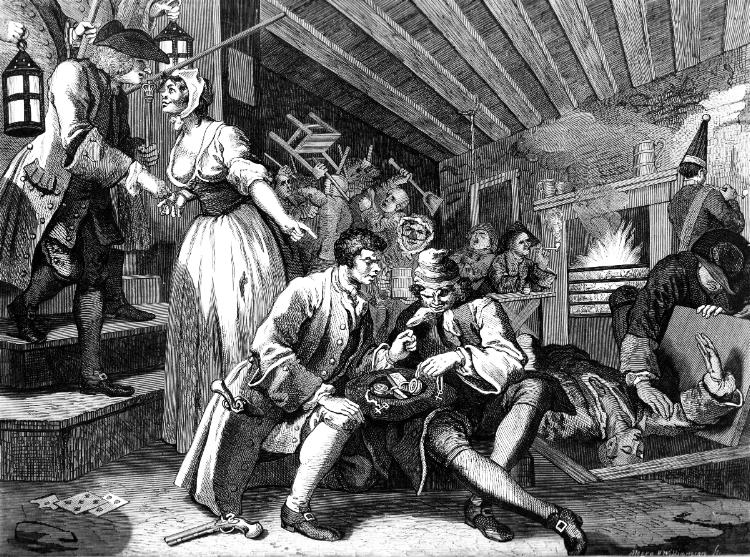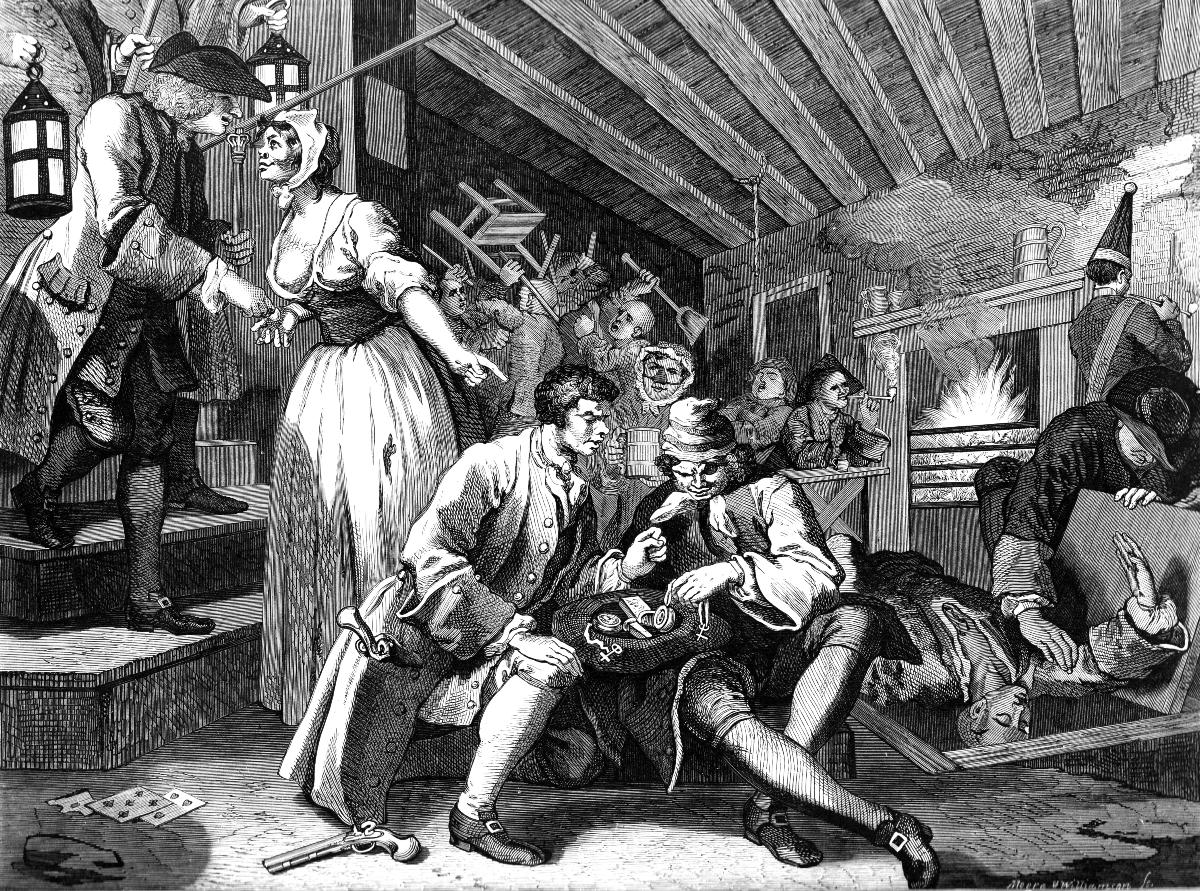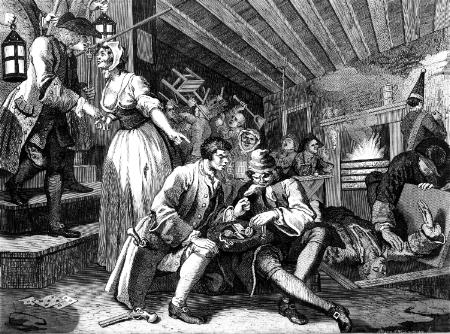
|

|
The amazing web site of Shakespeare's Sonnets. Industry and Idleness. Plate 9. The Idle Apprentice betrayed by his whore and taken in a night cellar with his accomplice , by Hogarth.
HAKESPEARE'S
ONNETS
This is part of the web site of Shakespeare's sonnets
PICTURE GALLERY.
William Hogarth 1697 - 1764.
Industry
and Idleness. Plate 9. The Idle Apprentice betrayed
by his whore and taken in a night cellar with his Accomplice.
1747.
| Hogarth
first achieved fame as an artist through his series of moralistic
engravings, commencing with A
Harlot's Progress
in 1731. This was followed by A
Rake's Progress
in 1735, Marriage
ŕ-la-mode
in 1743-5, and Industry
and Idleness in
1747
. Originally the sets of pictures were oil
paintings which
Hogarth subsequently published as engravings. However the
Industry and Idleness series was conceived entirely as a set
of engravings which were not copied from paintings. They were
put on sale for one shilling each, which is equivalent today, (2008),
to about ten pounds sterling (GBP). Evidently Hogarth was
trying
to appeal to a wider audience than the upper class wealthy who were his
usual patrons. The Industry and Idleness series is rather crudely moralistic, depicting how industry and virtue are rewarded with worldly success, while idleness, corruption and vice is ultimately punished by the gallows. Despite this rather tedious tale, which is not true to life and simplistically misrepresents the apprenticeship system of the time, the engravings are a superb record of both the lower and upper end of London life of the time. The banqueting scene of Plate 8 and the two final crowd scenes of the Tyburn spectacle and the Lord Mayor's Parade are incomparable and show the satirical Hogarth at his very best. |
||
| The scene is set in a cellar known as Bloodbowl House, a notorious den of thieves and in particular the haunt of members of a gang called the Black-boys. It was in Black-boy Alley, leading out of Chick Lane, Smithfield. Evidently a man who was probably drunk has been lured off the street and killed for his posessions, which are being examined by Tom Idle and his accomplice, the one eyed villain of Plate 3. The dead man is being bundled down through a trap door. A woman with a syphilitic nose serves up a tankard of ale. Meanwhile a drunken brawl has erupted in the rear of the room. Tom, being preoccupied with the spoils and unconcerned with the din, fails to notice that his woman is admitting the constables, the first of whom slips a coin into her hand, perhaps as a pledge of a further reward. | ||


Shakespeare's Sonnets:
| Start here with the first sonnet |
|
Sonnets 1 - 50 | Some links to other sites | ||
|
|
Sonnets 51 - 100 | ||||
|
|
|
Sonnets 101 - 154 | For
a global search use all the sonnets as
plain text 1-154 or use the first line index. |
If
you have enjoyed this web site, please
visit its companion - Pushkin's Poems |
|
| Map of the site | |||||
| Views of London as it was in 1616. |
London Bridge As it was in Shakespeare's day, circa 1600. |
To
search for a line or phrase in the sonnets
go to the sonnets as plain text and use the browser text search engine. |
| Views of London as it was in 1616. |
London Bridge As it was in Shakespeare's day, circa 1600. |
To search for a line or phrase in the sonnets
go to the Sonnets as plain text and use the browser text search engine. |
| Sonnets 1 - 50 | Back to home page | |
| Sonnets 51 - 100 | If
you have enjoyed this web site, please
visit its companion - Pushkin's Poems |
|
| Sonnets 101 - 154 | If you wish to comment on this site please refer to details on the home page. | |
| Copyright Šof this site belongs to Oxquarry Books Ltd |

Copyright Šof this site belongs to Oxquarry Books Ltd